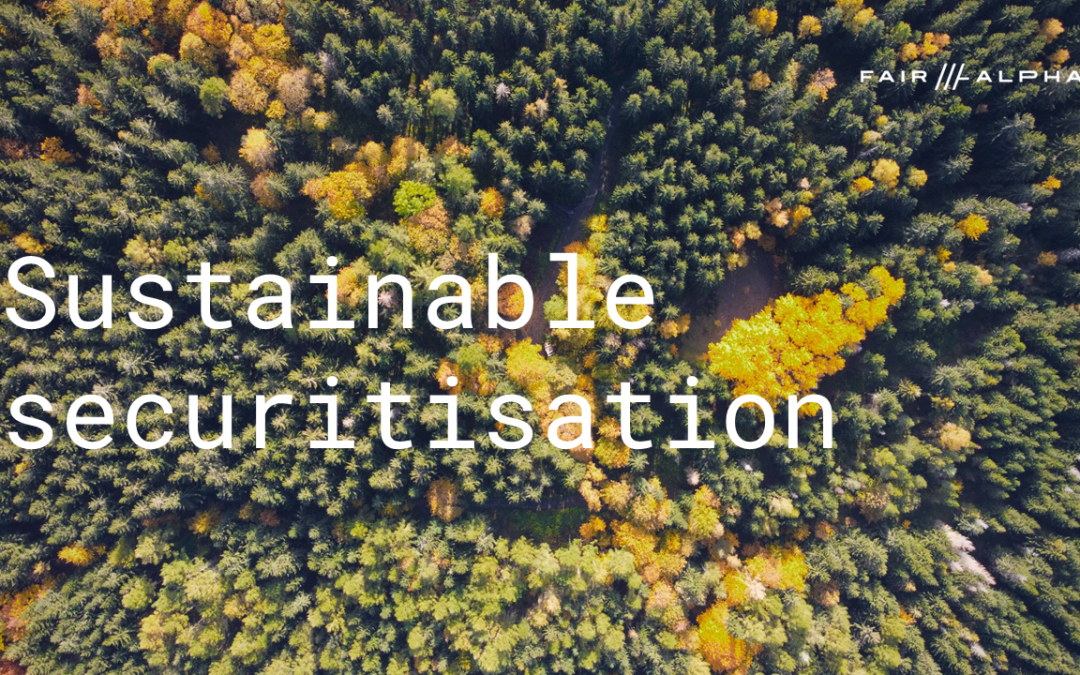The green transformation of the economy requires a lot of capital, which is supposed to be raised not only by the state, but also by private-sector investors such as banks and pension funds. “And this is working well, because politically desired investments have the appropriate support and are readily accepted”, said Tim Faltis, Board Member at FAIR ALPHA. “Immediately available investment opportunities are currently scarce, but green securitisations could be a good option.” Their advantage is that they are quick to market and enjoy a favourable cost structure.
“At this time, we are noticing a huge rush into sustainable investments, such as green bonds, where demand far exceeds supply,” Faltis said. “Sustainable securitisations are increasingly used to bridge the gap between supply and demand.” Securitisations under Luxembourg law create different compartments within a company that are entirely separate. They issue securities with their own ISIN and which are eligible for deposit. This allows projects such as wind farms, solar parks and other sustainable projects and strategies to be securitised.
“Such compartments can be taken from idea to market very quickly” Faltis pointed out. “Luxembourg securitisation law provides a very clear framework for both issuers and clients.” Since they are tradable, securitisations are also advantageous for sustainability investments. Unlike closed-end investments, a method of financing used by most large-scale infrastructure projects in the renewable energy sector, they offer a path to reach other client groups as well.
This provides easier access to much-needed sustainable investment solutions not only to large institutional investors. “Smaller institutional clients will also benefit”, according to Faltis. Given that the compartments are entirely segregated assets, there is virtually no issuer risk associated with the securitisation platform or other compartments either, and full transparency can be offered across the entire structure and cash flows. “Frequently, this is a big advantage for institutional investors”, Faltis said. “This gives investors detailed insight into the risks that they are accepting into their portfolio.“
More often than not, investments in the sustainability sector benefit from a better risk profile. “Since many of the projects that are financed are enjoying strong political support, political risks are relatively low”, Faltis explained. “Political risks are frequently encountered in large infrastructure projects, such as when permits are delayed or in cases where additional requirements are imposed.“
Sustainable products are also more attractive to many investors. “So attractive in fact that some, such as in the case of green bonds, accept a lower interest rate”, Faltis highlighted. Since green bonds are frequently issued at a lower interest rate than comparable conventional bonds, issuers benefit from a lower cost of capital. “Investors tend to be willing to accept a lower interest rate if the instrument is certified”, Faltis said. “This is partly due to the benefits, but also owed to stakeholder pressure.” Institutional investors in particular are under pressure from regulators or clients to use sustainable instruments, with green bonds conforming to an internationally recognised framework. “We are issuing green securitisations in accordance with standards that are well known from green bonds, so that they are verified and certified”, Faltis added. “In the future, there will most certainly be a separate product-specific framework for securitisations, which will then render certification more efficient and thus should further drive demand.“

